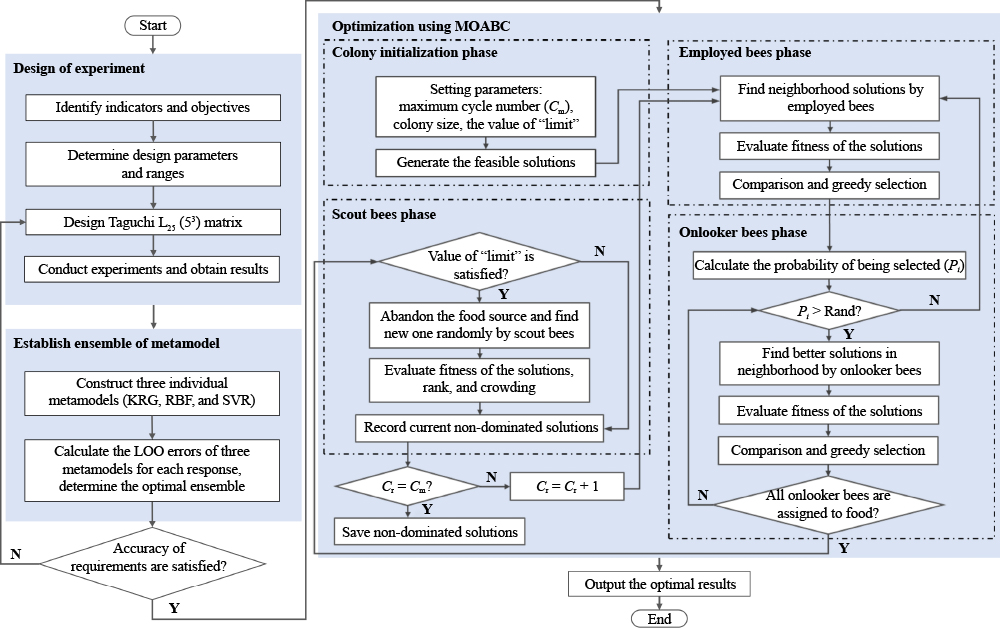Processing parameter optimization for LBW involves establishing the nonlinear relation between the studied parameters and the welding results, which is a challenging task that is typically carried out through trial and error [
15]. Given the intrinsic complexity of LBW processes, extensive human effort and high financial costs are needed to conduct the required experiments, and oftentimes, the insights gained are not proportionate to the effort spent [
3,
7]. To address this issue, some studies have used various modeling methods to optimize processing parameters [
16–
19]. Among these methods, metamodeling is considered a promising technique to reveal the relationships between processing parameters and welding results [
20–
24]. In this vein, Srivastava and Garg [
22] used the response surface method (RSM) in arc welding to investigate the effects of process parameters on bead geometries. Rong et al. [
23] employed the back-propagation neural network and genetic algorithm to optimize the seam shape in laser brazing processes with welding crimping butt and conducted experiments to demonstrate the feasibility of this method. Wang et al. [
24] combined the Gaussian process regression model with the simulation results of laser direct energy deposition to predict the geometrical characteristics of cladding tracks by using various process parameters. However, every metamodel has its own characteristic [
25], and no individual metamodel has been proven to be the most effective for all applications [
26]. Specifically, RSM is suitable for the overall trend of data and excels in fitting convex problems [
27,
28], whereas kriging (KRG), radial basis function (RBF), and support vector regression (SVR) are appropriate for multimodal and nonlinear problems [
28,
29]. RBF is recommended for high-order nonlinear problems, and KRG is recommended for low-order nonlinear problems in high-dimension spaces [
26,
30]. Thus, randomly selecting a metamodel may increase the possibility of obtaining suboptimal results [
31,
32]. The accuracy of an individual metamodel relies mostly on the specific training sample set used and the characteristics of the problems faced; therefore, the selected metamodels may be inaccurate when new sample points are employed [
25,
31].


















